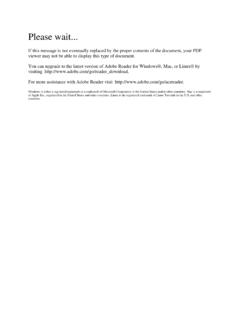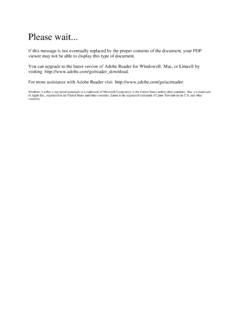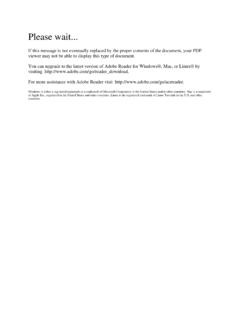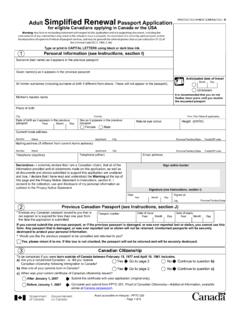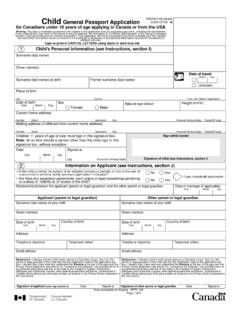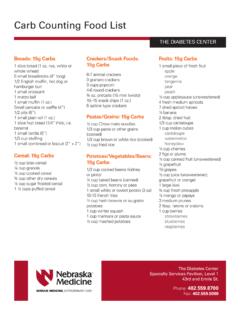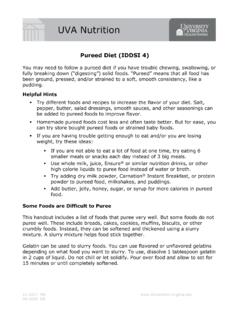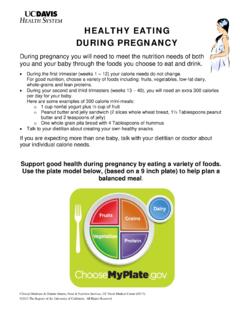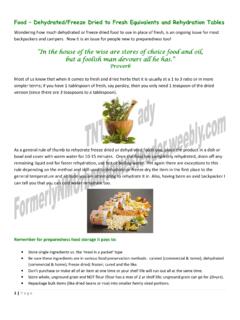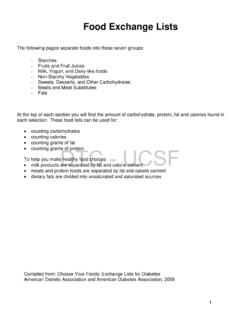Transcription of Eating Well with Canada’s FoodGuide
1 Eating Well withCanada s food GuideFirst Nations, Inuit and M tisHow to use Canada s food GuideThe food Guide shows how many servings to choose from each foodgroup every day and how much food makes a Well Every DayCanada s food Guide describes healthy Eating for Canadians two years of age or the amount and type of food recommended in Canada s food Guide will help: children and teens grow and thrive meet your needs for vitamins, minerals and other nutrients lower your risk of obesity, type 2 diabetes, heart disease, certain types of cancer andosteoporosis (weak and brittle bones).Other vegetables125 mL (1/2 cup)Fruit1 fruit or 125 mL (1/2 cup)100% Juice125 mL (1/2 cup)Berries125 mL (1/2 cup)Bread1 slice (35 g)Bannock35 g (2 x 2 x 1 )Cold cereal30 g (see food package)Cheese50 g (1 1/2 oz.)
2 Peanut butter30 mL (2 Tbsp)Dark green and orange vegetables125 mL (1/2 cup)Eat at least one dark green and one orange vegetable each day. Choose vegetables and fruit prepared with little or no added fat, sugar or salt. Have vegetables and fruit more often than at least half of your grain products whole grain each day. Choose grain products that are lower in fat, sugar or 500 mL (2 cups) of skim, 1% or 2% milk each day. Select lower fat milk alternatives. Drink fortified soy beverages if you do not drink meat alternatives such as beans, lentils and tofu often. Eat at least two food Guide Servings of fish each week.* Select lean meat and alternatives prepared with little or no added fat or meat and poultry75 g cooked (2 1/2 oz)/125 mL (1/2 cup)Fish and shellfish75 g cooked (2 1/2 oz)/125 mL (1/2 cup)Canned milk(evaporated)125 mL (1/2 cup)Fortified soy beverage250 mL (1 cup)MilkPowdered milk, mixed250 mL (1 cup)Traditional meats and wild game75 g cooked (2 1/2 oz)/125 mL (1/2 cup)Beans cooked175 mL (3/4 cup)Yo g u r t175 g (3/4 cup) cooked riceWhite, brown, wild125 mL (1/2 cup) cooked pasta125 mL (1/2 cup)Hot cereal175 mL (3/4 cup)Eggs2 eggsLeafy vegetables and wild plantscooked 125 mL (1/2 cup) raw 250 mL (1 cup)Vegetablesand FruitFresh, frozenand andAlternativesMeat andAlternatives7 107 85 6434 66 77 822 4 Teens3 4 Adults(19-50 years)2 Adults(51+ years)
3 32311 2 Teens3 4 Adults(19-50 years)2 Adults(51+ years)3 Recommended Number ofFood Guide Servings per dayChildren 2 3 years oldChildren 4 13 years old1. Find your age and sex group in the chart Follow down the column to the number of servings you need foreach of the four food groups every Look at the examples of the amount of food that counts as oneserving. For instance, 125 mL (1/2 cup) of carrots is one servingin the Vegetables and Fruit food is one food Guide Serving?Look at the examples cooking or adding fat to food : Most of the time, use vegetable oils with unsaturated fats. Theseinclude canola, olive and soybean oils. Aim for a small amount (2 to 3 tablespoons or about 30-45 mL)each day. This amount includes oil used for cooking, salad dressings,margarine and mayonnaise.
4 Traditional fats that are liquid at room temperature, such as sealand whale oil, or ooligan grease, also contain unsaturated fats. Theycan be used as all or part of the 2-3 tablespoons of unsaturated fatsrecommended per day. Choose soft margarines that are low in saturated and trans fats. Limit butter, hard margarine, lard, shortening and bacon fat.*Health Canada provides advice for limiting exposure to mercury from certain types of fish. Refer to the latest information. Consult local, provincial or territorial governments for information about Eating locally caught and Adults(Females)(Males)For more information, interactive tools or additional copies visit Canada s food Guide contact:Publications Health Canada Ottawa, Ontario K1A 0K9 E-Mail: Tel.
5 : 1-866-225-0709 TTY: 1-800-267-1245 Fax: (613) 941-5366 galement disponible en fran ais sous le titre : Bien manger avec le Guide alimentaire canadien Premi res Nations, Inuit et M tisThis publication can be made available on request on diskette, large print, audio-cassette and braille. Her Majesty the Queen in Right of Canada, represented by the Minister of Health Canada, 2007. This publication may be reproduced without permission. No changes permitted. HC Pub.: 3426 Cat.: H34-159/2007E ISBN: 0662-44562-7 People who do not eat or drink milk productsmust plan carefully to make surethey get enough traditional foods pictured here are examples of how people got, andcontinue to get, nutrients found in milk products. Since traditional foods are noteaten as much as in the past, people may not get these nutrients in the amountsneeded for who do not eat or drink milk products need more individual advice froma health care plants, seaweedFish with bones, shellfish, nuts, beansBannock (made with baking powder)For strong body, mind and spirit, be active every of childbearing ageAll women who could become pregnant, and pregnant and breastfeeding women, need a multivitamin with folic acidevery day.
6 Pregnant women should make sure that theirmultivitamin also contains iron. A health care provider can help you find the multivitaminthat is right for pregnant and breastfeeding, women need to eat a little more. They should include anextra 2 to 3 food Guide Servings from any of the food groups each example: have dry meat or fish and a small piece of bannock for a snack, or have an extra slice of toast at breakfast and an extra piece of cheese at and menover the age of 50 The need for vitamin Dincreases after the age of addition to following Canada sFood Guide, men and womenover the age of 50 should take adaily vitamin D supplement of 10 g (400 IU).Respect your Your choices matterFollowing Canada s food Guide and limiting foods and drinks which contain a lot of calories, fat, sugar or salt are important ways to respectyour body.
7 Examples of foods and drinks to limit are: pop fruit flavoured drinks sweet drinks made from crystals sports and energy drinks candy and chocolate cakes, pastries, doughnuts and muffins granola bars and cookies ice cream and frozen desserts potato chips nachos and other salty snacks french fries alcoholThis guide is based on Eating Well with Canada s food Guide.
